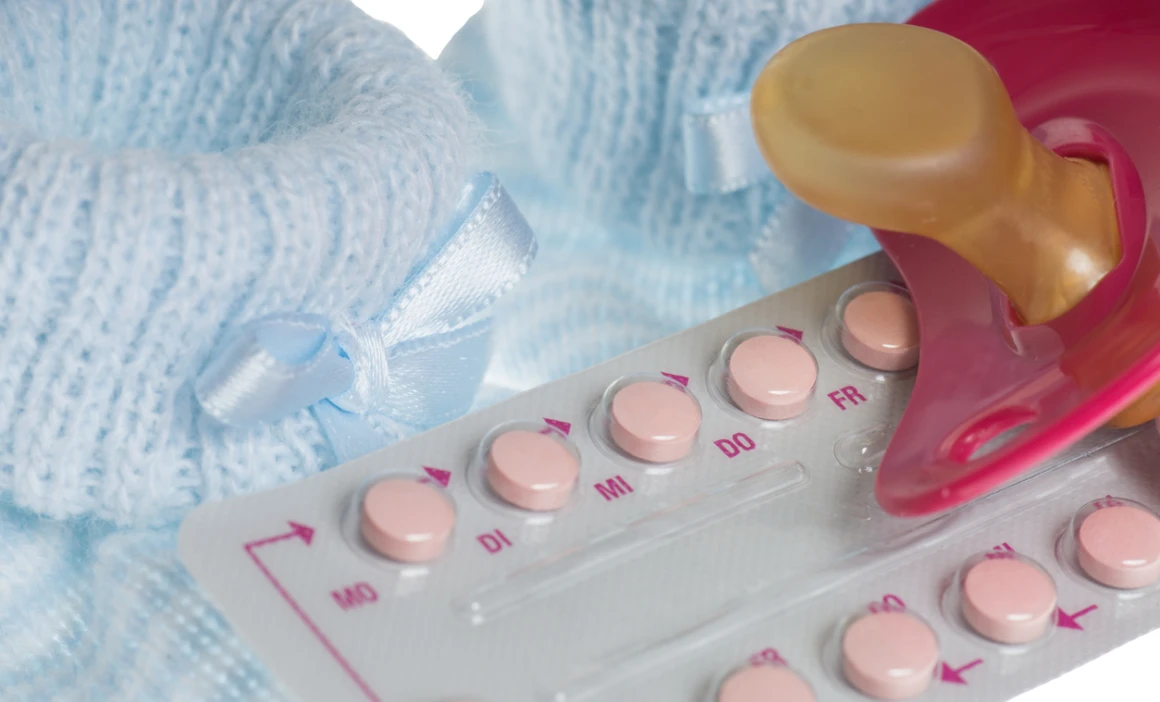
Contraception During Breastfeeding: Safe, Doctor-Approved Methods for 2025

Cradle of Nutrition
- 4 minutes read
Breastfeeding and birth control are two major parts of postpartum life. Many new mothers ask: Can I get pregnant while breastfeeding?
The answer is yes — although breastfeeding can delay the return of fertility, it is not a foolproof method of contraception.
If you want to prevent pregnancy while nursing, choosing the right contraception during breastfeeding is essential for your health and peace of mind.
In this complete guide, we’ll explain safe, effective birth control options for breastfeeding moms, supported by research and professional advice.
Can Breastfeeding Prevent Pregnancy?
Breastfeeding can delay ovulation through a natural process known as the Lactational Amenorrhea Method (LAM).
Here’s how LAM works:
- Frequent, exclusive breastfeeding increases prolactin levels, a hormone that suppresses ovulation.
- No ovulation means no pregnancy — temporarily.
However, LAM is only up to 98% effective if all three conditions are met:
- Your baby is less than six months old.
- You are exclusively breastfeeding (day and night, without long gaps or formula).
- Your period has not returned postpartum.
Important:
Once you introduce formula, solid foods, or your period comes back, LAM’s effectiveness drops significantly.
The Best Birth Control Options While Breastfeeding
Fortunately, several safe contraception methods are available that will not harm your milk supply or your baby’s health. Let’s explore the most popular ones:
1. Progestin-Only Methods (Mini-Pill, Injection, Implant)
How They Work:
Progestin-only contraceptives:
- Thicken cervical mucus to block sperm.
- Suppress ovulation (depending on the method).
- Thin the uterine lining to prevent implantation.
Options:
- Mini-Pill: A daily pill taken at the same time every day.
- Depo-Provera Injection: A shot given every 3 months. Although Depo-Provera is a highly effective contraceptive method, it may cause side effects such as irregular periods and delayed return to fertility—sometimes up to one year or more after the last injection.
- Implant (Nexplanon): A small rod inserted under the skin that works for up to 3 years.
Why it’s good during breastfeeding:
These methods do not affect milk production, making them highly recommended for nursing moms.
2. Intrauterine Devices (IUDs)
How They Work:
IUDs prevent pregnancy by:
- Blocking sperm movement.
- Changing cervical mucus and uterine lining.
Types:
- Hormonal IUDs (Mirena, Kyleena, Jaydess): Release small amounts of progestin.
- Copper IUDs (ParaGard): Hormone-free, creating a sperm-toxic environment.
Why it’s good during breastfeeding:
IUDs (Intrauterine Devices) are a highly effective, breastfeeding-safe contraceptive option that can be inserted immediately after delivery or at the 6-week postpartum checkup, do not affect ovulation, and provide long-lasting protection for 5 to 10 years with over 99% effectiveness.
3. Barrier Methods (Condoms, Diaphragms)
How They Work:
Barrier methods physically block sperm from reaching the egg.
Options:
- Male and female condoms
- Diaphragm and cervical cap (fitted by a doctor)
Why it’s good during breastfeeding:
They are non-hormonal, instantly available, and protect against STIs if using condoms.
Effectiveness Tip:
For higher success rates, use condoms with spermicides.
4. Permanent Birth Control (Sterilization)
How It Works:
- Tubal ligation: Sealing the fallopian tubes.
- Vasectomy (for men): Cutting the sperm-carrying tubes.
Why it’s good during breastfeeding:
It’s safe, permanent, and does not affect breastfeeding.
Note:
Choose sterilization only if you are certain your family is complete.
5. Combined Hormonal Contraceptives (Pill, Patch, Ring)
How They Work:
These methods:
- Prevent ovulation.
- Thicken cervical mucus.
- Thin the uterine lining.
Options:
- Combined Pill: Taken daily.
- Patch: Changed weekly.
- Vaginal Ring: Worn for three weeks, removed for one week – but for managing painful periods or endometriosis, continuous use without the ring-free week is recommended to provide better symptom relief and hormonal stability.
Caution:
Estrogen in these (combined) methods can slightly reduce milk supply. It’s recommended to wait 6 weeks postpartum (or longer) – to allow breastfeeding and milk production to stabilize before starting combined hormonal contraception.
When Combined Hormonal Contraception Is Not Recommended:
Combined hormonal contraception is not recommended for women with certain health conditions, including:
- a history of blood clots (thrombosis) or clotting disorders
- migraines with aura
- high blood pressure
- hormone-sensitive cancers
- smoking over age 35
- severe liver disease
- recent stroke or heart attack
- or suspected pregnancy.
In these cases, safer alternative contraceptive methods should be considered.
How to Choose the Right Contraception During Breastfeeding
When picking the best birth control while breastfeeding, consider:
- How long you want to delay pregnancy.
- Whether you prefer hormonal or non-hormonal methods.
- How easy it is to use (daily vs long-term).
- Your comfort with permanent options.
Always discuss your personal situation with a healthcare provider for tailored advice.
Key Takeaway
While breastfeeding can provide some natural birth control, it’s not reliable on its own after six months postpartum — or earlier if breastfeeding patterns change.
Choosing the right contraception during breastfeeding helps you stay in control of your family planning without compromising your ability to nourish your baby.
With safe, effective options like progestin-only pills, IUDs, implants, and barrier methods, you can find a solution that fits your lifestyle perfectly.
By Erika Barabás
References:
- Centers for Disease Control and Prevention (CDC) – U.S. Medical Eligibility Criteria for Contraceptive Use, 2016.
- World Health Organization (WHO) – Family Planning: A Global Handbook for Providers, 2018.
- American College of Obstetricians and Gynecologists (ACOG) – Postpartum Birth Control Guidelines.






